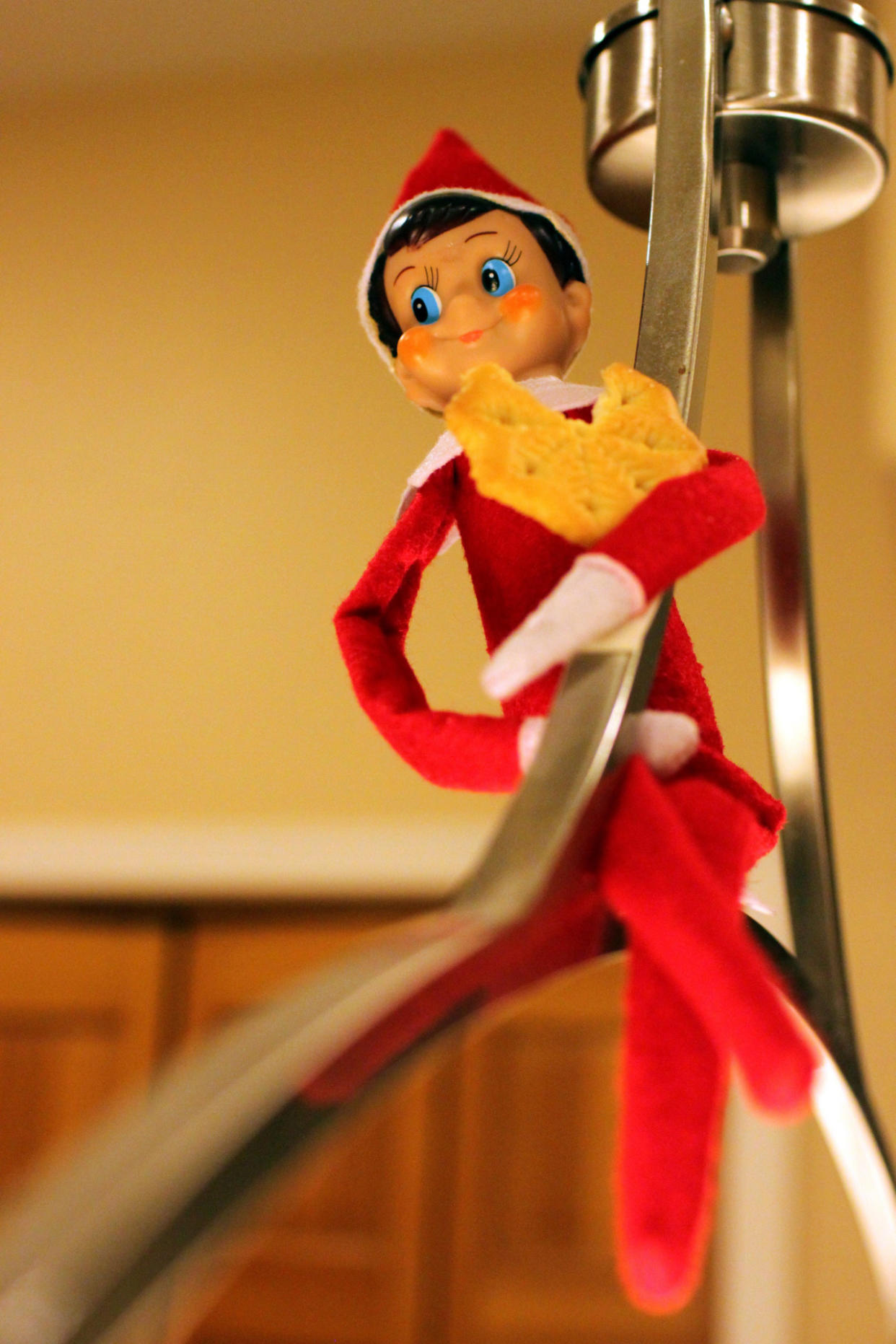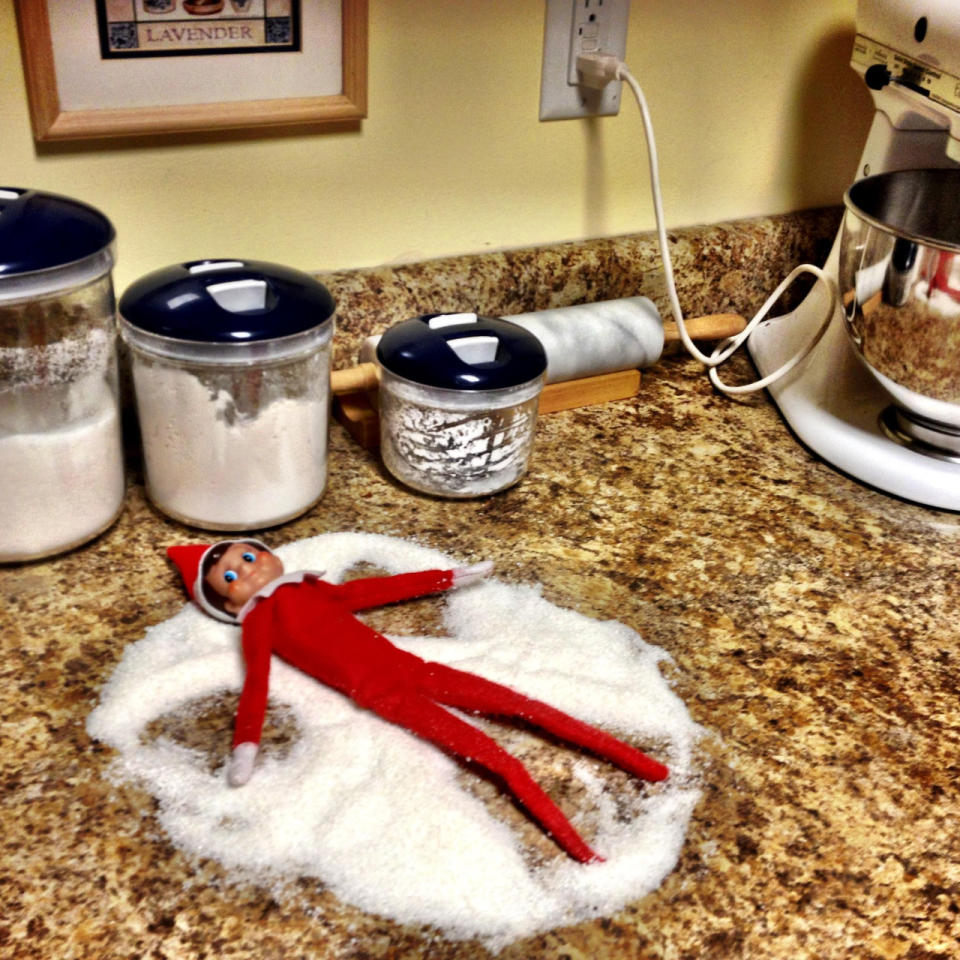5 Traits That Elf on the Shelf Promotes

With the holiday season in full swing, some parents are starting to break out their Elf on the Shelf, the ubiquitous toy elf that acts as Santa’s scout, reporting back to the North Pole on who has been naughty and nice.
Parents may find it fun (or a hassle, depending on your view) to move the toy to a different location in the house each night, reminding kids that the elf is everywhere and sees all. But does the Elf on the Shelf have a naughty or nice effect on kids’ behavior?
STORY: Reasons Parents Love (and Hate) Elf on the Shelf
Nice: It can make kids think twice before behaving badly.
Knowing that you might make Santa’s naughty list if the sprite catches you refusing to share a toy with your sister is enough to keep some kids in line. “The elf is a visual cue to act nice,” Judith Tellerman, clinical professor of psychology at the University of Illinois College of Medicine and a clinical psychologist in private practice in Chicago, tells Yahoo Parenting. “It might remind kids not to fight with their brother.”
Naughty: It may teach kids that they only have to behave one month out of the year.
Most parents only take out the Elf on the Shelf around the holidays, which can make it seem that good behavior only counts at the end of the year — at least when it comes to getting presents. “It’s almost saying you can get away with being bad for 11 months and now you can be good,” says Tellerman. “Does that undo months of acting ‘bad’? Suddenly, the elf is there and you’ll be good and that will get you off the hook?”
Nice: On the other hand, it may also teach kids about second chances.
No one — children or adults — behaves perfectly all year long. But forgiving kids for past transgressions can help teach them about compassion and second chances. The Elf on the Shelf may give children an opportunity and a reminder to be on good behavior. “The elf gives you a last-minute reprieve,” she says. “It’s your last-chance little helper.”

(Photo: Peapodsquadmom/Flickr)
Naughty: It can teach kids to expect presents for good behavior.
“There’s a very clear message with something like [Elf on the Shelf] and with the whole Santa Claus ‘naughty or nice’ concept, which is: If you’re good, you’ll get stuff,” Tim Kasser, a psychology professor at Knox College, told the Huffington Post.
Tellerman adds that not all rewards for good behavior are harmful, but that it’s more important for children to do a good deed for its own sake, such as pitching in with chores, rather than being motivated by presents. “You should learn to help because it’s good to do — you’re being a good family member,” she says.
STORY: Do You Think This Christmas Ad Is Heartwarming or Incredibly Sad?
Nice: It can encourage kids to do good deeds for others.
If parents frame it right, the Elf on the Shelf doesn’t have to be a tattletale in the negative sense. The toy can be used to “catch” kids acting nice, which acknowledges and encourages children’s good behavior. “Parents can decrease misbehavior by focusing on positive behavior,” Kristin J. Carothers, a clinical psychologist at the Child Mind Institute, recently told Yahoo Parenting. “The idea is to encourage them to grow up to be pro-social adults who don’t just avoid being naughty but actually do nice things for others.”
Adds Chanda Bell, one of the toy’s creators: “Because the elf reports nice things back to Santa, it provides a great opportunity to encourage families to do kind deeds, give to charity, or participate in philanthropy,” she told the Huffington Post. “Santa can also deliver gifts that are not material in nature, like a donation to charity in a family’s name, or something faith- or family-focused.”
(Top photo: Mike Allyn/Flickr)
Please follow @YahooParenting on Facebook, Twitter, Instagram, and Pinterest. Have an interesting story to share about your family? Email us at YParenting (at) Yahoo.com.


